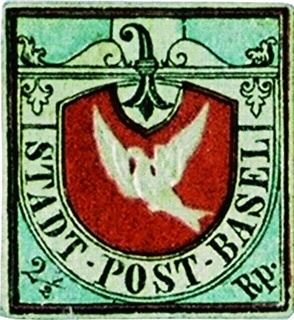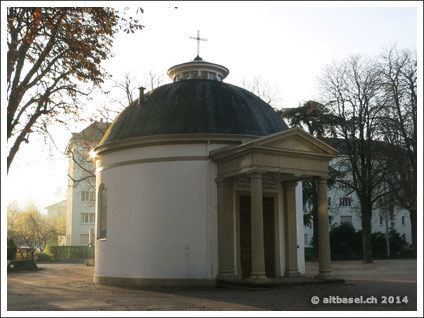Name Melchior Berri | Role Architect | |
 | ||
Spouse Margaretha Salome Berri-Burckhardt (m. 1832) Children Marie Elisabeth Berri, Susanna Amalie Berri, Julie Berri People also search for Marie Elisabeth Berri | ||
Basler dybli briefkasten von melchior berri dialektfassung
Melchior Berri (born 20 October 1801 in Basel, died 12 May 1854 in Basel) was a well-known Swiss architect.
Contents
- Basler dybli briefkasten von melchior berri dialektfassung
- Early life
- Career
- Buildings
- Miscellaneous
- Demolished buildings
- References

He was the son of Melchior Berri (parish priest in Münchenstein) and Appollonia Streckeisen. In 1832 he married Margaretha Simone Burckhardt of Basel.
Early life
Berri grew up as the son of a pastor in Basel and Münchenstein. Between 1817 and 1823, he studied with the famous architect Friedrich Weinbrenner in Karlsruhe. Afterwards he worked with the architect Jean-Nicolas Huyot in Paris and studied at the Parisian Academy.
In 1826, he travelled to Italy, where he took an interest, both in Pompeii's buildings and frescos, and in the Renaissance palaces of Rome. In doing so, he developed the technical skills of a stonemason, plasterer, and bricklayer. He also practised drawing landscapes and figures, and studied subjects of technical construction.
Career
In 1828, Melchior Berri opened a construction business and a school of construction and drawing in Basel. His impact outside of the Basel region is mostly due to the construction of the Basel Museum, his only remaining monumental building, but is also due to his designs for city halls in Zurich and in Bern, as well as his plans for housing development for Luzern and Basel.
Berri was also a member of Basel-Stadt's Grand Council and its construction commission, and in 1841, he became president of the Verein Schweizerischer Ingenieure und Architekten (SIA; Association of Swiss Engineers and Architects). He obtained international fame as a neo-classical architect and became honorary doctor of two British architectural associations.
Between the stress he was under as both a builder and an artist, but possibly also due to the constraints of his provincial circumstances, Berri became depressed and took his own life in 1854.
